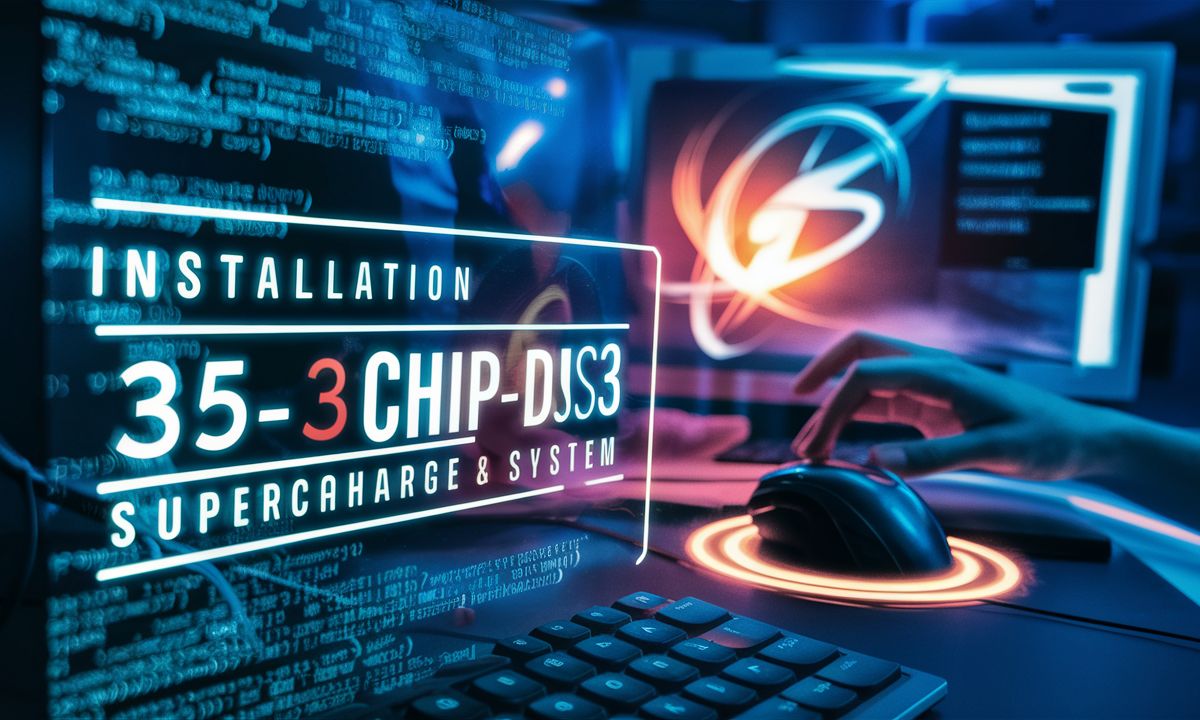The 35-ds3chipdus3 represents a breakthrough in high-performance computing, delivering exceptional processing power for modern systems. This microchip technology transforms ordinary computers into powerhouse workstations capable of handling demanding tasks with ease.
What Is the 35-ds3chipdus3?
The 35-ds3chipdus3 is an advanced processor upgrade featuring eight-core architecture with multithreading capabilities. This smart-core design incorporates adaptive temperature controls and ultra-low latency cache access, making it ideal for gaming, 3D rendering, and machine learning applications.
The chip’s intelligent power management system optimizes energy efficiency while delivering up to 40% performance improvement over standard processors. Its compatibility with AI acceleration and machine learning extensions ensures future-proofing for emerging technologies.
Key Benefits of Upgrading
Performance enhancement stands as the primary advantage, with benchmark testing showing significant improvements in application launch times and processing speeds. Users experience 30% energy savings under full load compared to older processors, reducing electricity costs and heat generation.
Multitasking performance receives substantial boosts, enabling seamless operation of multiple high-performance applications simultaneously. This capability proves invaluable for content creators, software developers, and gaming enthusiasts who demand consistent performance under heavy workloads.
Pre-Installation Checklist
Hardware Compatibility
Motherboard compatibility requires 1151-v2 socket type or equivalent chipset architecture. Verify your motherboard supports this specification through manufacturer documentation before proceeding with installation.
Power supply requirements demand minimum 600W capacity for stable operation. Insufficient power causes system instability and potential boot failures during intensive processing tasks.
Memory specifications need DDR4-2666 RAM or higher, with DDR4-3200 recommended for optimal performance. The chip’s advanced architecture benefits significantly from high-speed memory modules.
Cooling solutions should include dual-fan air coolers or liquid AIO systems. While the chip includes heat spreaders, active CPU cooling ensures proper thermal management under heavy workloads.
Software Requirements
BIOS updates often become necessary for proper chip recognition. Download the latest motherboard BIOS from manufacturer websites to ensure compatibility with advanced processor features.
Operating system support includes Windows 10+, most Linux distributions, and macOS through Hackintosh configurations. Verify your OS version supports the chip’s capabilities for maximum performance benefits.
How to Install 35-ds3chipdus3
Safety Preparation
Begin with electrostatic discharge protection by disconnecting all power cables and using anti-static wristbands. Create a clean workspace with adequate lighting and organize tools for efficient installation.
Case Access and Processor Removal
Remove the side panel carefully, especially with tempered glass configurations. Unlock the CPU socket retention arm and lift the old processor without touching gold contact pins. Socket inspection ensures no bent pins or debris interfere with installation.
Chip Installation Process
Align triangle markers on both chip and socket for proper orientation. The 35-ds3chipdus3 should drop into place without force. Engage the retention arm smoothly to secure the processor in position.
Apply pea-sized thermal paste amounts to the chip center, then install your chosen cooling solution according to manufacturer specifications. Ensure even pressure distribution across all mounting points.
System Assembly and Initial Boot
Reconnect all cables with secure connections and perform cable management for optimal airflow. Initial power-on should complete POST procedures successfully, indicating proper hardware recognition.
BIOS Configuration and Optimization
Access BIOS setup during startup to confirm processor recognition and adjust default clock speeds. Enable XMP profiles for automatic memory optimization and configure fan curves for optimal cooling performance.
Advanced users can explore overclocking options through gradual multiplier increases, combined with stress testing using Prime95 or AIDA64. Monitor temperatures to remain below 85°C under full load.
Performance Optimization Strategies
Memory optimization significantly impacts system performance, with the chip excelling using DDR4-3200MHz or faster modules. Dual-channel configurations maximize memory bandwidth and overall system responsiveness.
Storage optimization through NVMe SSD integration eliminates I/O bottlenecks that could limit processor performance. High-speed storage enables faster application loading and file transfers.
Power management settings should balance performance with energy efficiency. Adaptive power modes automatically adjust clock speeds based on workload demands, extending component lifespan while maintaining performance.
Troubleshooting Common Issues
Boot failures typically result from loose connections or compatibility issues. Verify power connector security, RAM seating, and CPU installation before investigating BIOS compatibility problems.
High temperatures often indicate improper thermal paste application or inadequate cooling. Cooler reinstallation with fresh thermal compound frequently resolves temperature concerns.
BIOS recognition problems may require firmware updates or microcode installations. Socket inspection can reveal physical installation issues requiring chip reseating.
Real-World Performance Applications
Gaming performance delivers smooth 144Hz+ gameplay at ultra settings with consistent frame rates and reduced loading times. Competitive gaming benefits from responsive input handling and stable performance.
Content creation workflows experience faster rendering times and real-time preview capabilities in Adobe Creative Suite and 3D modeling applications. Video encoding processes complete substantially faster.
Professional development environments benefit from reduced compile times and improved virtual machine performance. Code compilation and debugging processes execute more efficiently.
Scientific computing applications leverage parallel processing improvements for data analysis and simulation software. AI model training and research computations complete significantly faster.
Conclusion
The install 35-ds3chipdus3 process represents a strategic system upgrade that delivers measurable performance improvements across diverse computing applications. From enhanced gaming experiences to professional productivity gains, this processor technology provides substantial value for users demanding high-performance computing capabilities.
Successful installation requires careful preparation, proper hardware compatibility verification, and attention to safety procedures. With appropriate cooling solutions and optimization techniques, users can unlock the full potential of this advanced microchip technology while ensuring system stability and longevity. The investment delivers immediate performance benefits and future-proofing capabilities that maintain system competitiveness as software requirements evolve.

I m John Nicker a Content Writer and SEO Expert with 5 years Experiness. I have Already work on BBC News Website.
















